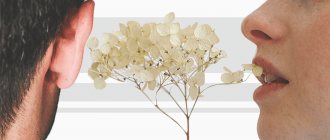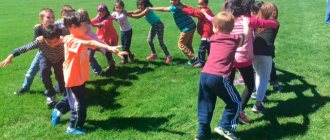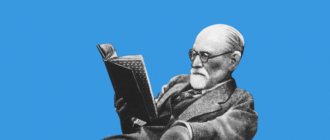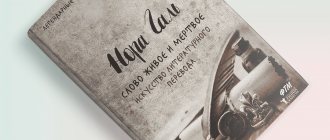Meditation is an effective way to normalize psychological and physical condition, achieve mental balance and a conscious, fulfilling life. To understand the essence of meditation techniques, master them and begin to practice them correctly, it is advisable to turn not to little-known sources, but to works that talk about meditation from the perspective of science and spirituality. The best books on meditation, which are necessary primarily for beginners, but will also be of interest to experienced meditators, are presented in the review below.
"Vipassana" - a book-guide to Buddhist meditation for beginners, Pramote Pamojo
Vipassana is the oldest Indian meditation technique, which is considered the basis of all meditative practices of our time. It itself is very simple and can be done even by a child. The book describing this meditation was written by a Buddhist monk and is a practical guide to mastering this technique. On the pages of the book, with colorful illustrations and clear life examples, the basics of Buddhist practices are outlined. Here it is easily and clearly explained how with the help of these practices you can achieve the highest spiritual goal - nirvana.
Signs of circulation problems
Symptoms of chronic circulatory failure in the brain may not appear until a situation requiring abundant blood supply: stress, unusual physical activity, or being in an unventilated room. They appear suddenly: headache, numbness of part of the face, loss of coordination of movements, tinnitus.
Chronically, the following symptoms may appear: frequent dizziness, decreased memory and performance, poor concentration, drowsiness or insomnia.
Signs of impaired blood flow in the extremities include intermittent claudication (pain when walking and its absence at rest), cold hands and feet in any weather, the formation of spider veins, heaviness, fatigue, swelling, cramps in the leg muscles.
“Meditation for every day. Unlocking inner abilities”, Roman Dolya
The author sets out in his book practices that experts call unique tools of self-knowledge. Along with this, they also have practical benefits, since they explain in detail all the intricacies of meditative science, show the meaning of awareness of one’s place, and help heal the body and soul. Meditation is presented here as a method of spiritual growth, thanks to which a person reveals his capabilities and restores health through filling with light energies. The divine world supplying these energies allows the mind to overcome delusions and reach a new level of development. The book describes the simplest meditation techniques, which makes it accessible to readers who are far from spiritual research.
Origin of language
Who wrote
Svetlana Burlak - Doctor of Philology, Professor of the Russian Academy of Sciences. She is also a teacher, author of linguistic problems and an avid player of “What? Where? When?".
Who should read it and why?
Perhaps someone hopes to read: they say that language appeared XXXXX years BC in the town of YYYY at the moment when the Cro-Magnon man came out of the cave and loudly said: “Glottogenesis!” Such expectations are not destined to be met.
There is no clear answer to the question of where, when and why language appeared in the book. But there is a hypothesis: language was evolutionarily inevitable as the logical conclusion of the path that primates—group animals that relied on intelligence—took. The tiger has a specialization in nature - fangs and claws, the antelope has the ability to run fast and digest grass, and our distant ancestors have the ability to understand causes and effects, as well as the ability to communicate this to their fellows.
Selected Quotes
“I try to rely only on what is firmly established, so you will not find many of the sensational discoveries often mentioned in connection with the problem of the origin of language on the pages of this book.”
“The development of the communication system, making the future more predictable, made it possible to foresee it so much that it became possible to produce increasingly more advanced (and more expensive to manufacture) tools. This, in turn, contributed to a further increase in the diversity of behavioral strategies and further increased the need for the development of a communication system.”
"Book of Secrets. The Science of Meditation, Osho
The book presents 112 meditative techniques, each of which allows you to go beyond the limits of consciousness. The author explains this diversity by the fact that all people are different and everyone needs their own meditation. The book “The Science of Meditation” by Osho needs to be read in order not only to find “your own”, but also to learn a variety of practices. The work is recommended both for connoisseurs of Osho’s works and for beginners just beginning to master the essence of meditation. It is suitable for any person, regardless of his experience, age, or faith. The main thing is an interest in knowing yourself and improving the quality of your life. An important advantage of the book is the presence of questions, answers and comments from Osho, who clearly and clearly explains each technique, revealing the secret meaning of Shiva’s sayings.
Lucifer effect
Who wrote
Philip Zimbardo is a professor of psychology. There probably isn't a social science textbook that doesn't mention his Stanford Prison Experiment. He also has popular works about shyness, relationships with time, social influence...
Who should read it and why?
The main question of the book: where do villains come from? More precisely, this way: how does it happen that people who most recently were respectable citizens turn into concentration camp guards, executioners, punishers, participants in genocide? From the point of view of Philip Zimbardo, the source of evil must be sought in the effects of social psychology. The natural tendency to cruelty is not so important - the social situation plays a key role.
The main illustration of this mechanism is the Stanford prison experiment, organized by the author of the book. Let us remind you: student volunteers were placed in a kind of prison, randomly divided into guards and prisoners. Less than a week later, the study had to be interrupted: the participants in the experiment got into the role too well.
There are many complaints about this study, some even talk about falsification. There are, however, those who consider the attacks on Zimbardo unfounded. In any case, as a journalistic statement it turned out to be very effective. No wonder three feature films were made based on it: the German Das Experiment, the American remake of The Experiment and The Stanford Prison Experiment. However, the book is much more expressive than all three films.
Selected Quotes
“We like the idea that an insurmountable gulf separates good people from bad people.”
“This really scares me. Imagine what would happen in our prison basement if the guards could do whatever they wanted with the prisoners. Imagine what they can do if they know that no one is controlling them, that no one is watching their secret games of power and submission.”
“Guard Seros did not allow the feeling of being trapped in his role to prevent him from exercising his power. He remarks: “I liked torturing them. It bothered me that Prisoner No. 2093 was so submissive. I made him clean my shoes with shoe polish seven times and he never objected."
“I now see that my role transformation from a kind and sympathetic teacher to an insensitive prison superintendent was terrible.”
"Meditation. Where to start”, Bokar Rinpoche
Bokar Rinpoche's book on meditation for beginners easily and clearly explains the basics of the Buddhist worldview and the essence of meditative practices. The work clearly demonstrates how happiness and unhappiness depend on a person’s consciousness, and not on external influence. The author describes time-tested methods for avoiding suffering and ways to achieve peace. Bokar Rinpoche promoted Vajrayana practice throughout the world. Thanks to his deep wisdom and simple explanations, he made this difficult meditation technique accessible even to beginners.
Rizwan Virk, “Business in the lotus position. How to combine work and spiritual search" (MYTH, 2014)
For many of us, spiritual growth and spiritual quest are significant areas of our lives. But how to combine hard work, constant multitasking and spiritual search? Is it possible?
I liked the fatigue test suggested by the author: “The test is this: you should leave work feeling more refreshed than when you arrived. If it works, then you used work as meditation. If you leave exhausted, you did a bad job.”
Rizwan Virk dreamed of owning his own business from a young age. He admired the founding stories of Apple and Microsoft, hoping to create something similar. Today, Rizwan Virk is a successful entrepreneur and investor.
His book is the story of a man who went from a convinced materialist to a deeply spiritual man whose mission is to help others recognize their path.
This book can be considered as a guide to building a business, or as a collection of lessons for spiritual growth.
“The power of now. A Guide to Spiritual Awakening by Eckhart Tole
One of the best books about meditation, written by spiritual master Eckhart Tole, teaches you to enjoy every moment and live in the present, and not regret the past or fantasize about the future. The author argues that one's true essence, joy, integrity and perfection are reality, not a goal. Tole offers a complete course of meditation that provides motivation for action. He explains that only one’s own selfish “I” becomes the cause of all problems and torment. You can free yourself from this only through unconditional presence in the real moment of life. Forgiving the past is not as necessary as forgiving the present. By forgiving the current moment, a person accepts it as it is, without resentment, which will also have to be forgiven someday.
Daniel Siegel, Mindsight. The New Science of Personal Transformation" (MYTH, 2015)
This book is ranked top on Amazon.com in the Psychology section.
Daniel Siegel, MD, is a child psychiatrist. He is the winner of numerous professional awards and the author of more than ten books on brain function and parenting, which have received high marks from readers and critics. Dr. Siegel is the director of the Mindsight Institute.
Daniel Goleman, author of Emotional Intelligence, said of his colleague's work: "Daniel Siegel's Mindsight Theory makes us say 'Eureka!' by helping us make sense of the endless tangle of jumbled emotions that often drive us crazy."
Indeed, Professor Daniel Siegel explains how the ability to focus attention on our inner world can significantly change the quality of life: “Our ability to concentrate is the key to integrative transformations in the structures of the brain. Through it, we can make the most effective use of the power of awareness, giving ourselves the alternative of choice and change.”
"In one breath. Meditation tutorial, Thich Hanh
Another book that reveals the incredible power of mindfulness. In addition, the author describes Buddhist practices with which you can get rid of regrets about the past and worries about the future, and also understand yourself in order to understand others. Zen teacher Thich Hanh talks about how to replace negativity with positivity, start enjoying the current moment, and not put off life for later. The book teaches how to make all the moments of your life bright and conscious, without getting lost in the turmoil of the modern world.
Also useful for beginners will be Nyanaponika Thera, a book about meditation that allows you to achieve the “four sublime states,” including love, compassion, co-joy and equanimity. The work is named after its author - Nyanaponika Thera, a Buddhist monk, Theravada theorist, researcher of Buddhist teachings of our time. This book is among the most interesting and inspiring accounts of dharma in modern Buddhist literature. Dharma is a kind of set of norms and rules, the observance of which ensures order in the Universe.
Mark Williams, Danny Penman, Mindfulness. How to find harmony in our crazy world" (MYTH, 2014)
A few words about the authors of the book.
Mark Williams is Professor of Clinical Psychology at the University of Oxford. He is one of the creators of the MBCT approach - Mindfulness Based Cognitive Therapy. Professor Williams repeatedly emphasizes that mindfulness (mindfulness practices) is one of the effective tools of the eight-week MBCT course.
For several years, Mark Williams and his colleagues have been studying the effects of mindfulness practices in preventing relapse of depression.
Scientists have proven the effectiveness of using this approach to prevent relapses, and also that regular meditation helps reduce irritability, anxiety and depression, improves memory, reaction speed, strengthens the immune system, thereby helping to prevent colds, flu and other diseases.
The UK National Clinical Research Institute has recommended this program to prevent relapse of depression.
Danny Penman is a science journalist and doctor of biochemistry. He has worked for the BBC, New Scientist and The Independent. He is a regular contributor to the Daily Mail.
This book can be used as a tutorial. Be prepared to commit about 30 minutes of exercise each day for eight weeks.
How to improve blood circulation in your legs
If you do not monitor blood circulation in your legs, you may miss the onset of the development of irreversible disorders. Poor blood flow leads to varicose veins - persistent dilation of veins. In order to ensure normal blood flow and vascular tone, avoid elevators and give preference to walking up the stairs. It is also useful to walk and ride a bicycle/exercise bike.
And these exercises can be done at home every day:
- Get on your knees with your elbows on the floor in front of you. As you exhale, straighten your legs so that your body forms the letter “L”, hold for 10 seconds, return to the starting position.
- Lying on your back, imitate riding a bicycle - arms behind your head, raise your legs perpendicular to your body. 30 rotations, the number of approaches may vary depending on the strength of the muscles.
- In a sitting position, press your heels to the floor, raise your toes, then vice versa. Repeat 20-30 times. Ideal in the evening for those who suffer from calf muscle cramps.
- Lying on your back, lift one leg. Rotate it clockwise 20 times. Repeat with the other leg counterclockwise.
- While sitting, spread your straight legs to the sides as far as stretching allows. Bend alternately in both directions 10 times.











